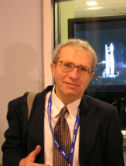| Abstract: |
Purpose: To identify predictors of biochemical tumor control and present an updated prognostic nomogram for patients with clinically localized prostate cancer treated with brachytherapy. Methods and Materials: One thousand four hundred sixty-six patients with clinically localized prostate cancer were treated with brachytherapy alone or along with supplemental conformal radiotherapy. Nine hundred one patients (61%) were treated with Iodine-125 ( 125I) monotherapy to a prescribed dose of 144Gy, and 41 (4.5%) were treated with Palladium-103 ( 103Pd) monotherapy to a prescribed dose of 125Gy. In patients with higher risk features (n=715), a combined modality approach was used, which comprised 125I or 103Pd seed implantation or Iridium-192 high-dose rate brachytherapy followed 1-2 months later by supplemental intensity-modulated image-guided radiotherapy to the prostate. Results: The 5-year prostate-specific antigen relapse-free survival (PSA-RFS) outcomes for favorable-, intermediate-, and high-risk patients were 98%, 95%, and 80%, respectively (p<0.001). Multivariate Cox regression analysis identified Gleason score (p<0.001) and pretreatment PSA (p=0.04) as predictors for PSA tumor control. In this cohort of patients, the use of neoadjuvant and concurrent androgen deprivation therapy did not influence biochemical tumor control outcomes. In the subset of patients treated with 125I monotherapy, D 90>140Gy compared with lower doses was associated with improved PSA-RFS. A nomogram predicting PSA-RFS was developed based on these predictors and had a concordance index of 0.70. Conclusions: Results with brachytherapy for all treatment groups were excellent. D 90 higher than 140Gy was associated with improved biochemical tumor control compared with lower doses. Androgen deprivation therapy use did not impact on tumor control outcomes in these patients. © 2012 American Brachytherapy Society. |










